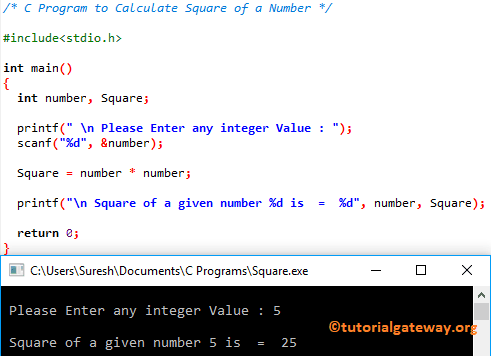

- #Calculate pi with random numbers in c program how to#
- #Calculate pi with random numbers in c program generator#
- #Calculate pi with random numbers in c program code#
It follows that the confidence interval for π is given byĭ. Where Z α/2 is the Z score such that the area under the standard normal curve with Z > Z α/2 = α/2 = (1 - level)/2. Output: count+1, newstate, r where r is the next pseudo-random number. Input: an array of length at least 2 interpreted as count, state. The random numbers are in 0 - 32767 inclusive. As explained in this Week 7 problem, the 100%*level confidence interval for E(X) can be computed by the formula 'A Pseudo-Random Number Generator' 15-bit integers generated using the same formula as rand() from the Microsoft C Runtime. (For those of you who have learned binomial distribution in the formal way, NX follows a binomial distribution with n=N and p= π/4.) Since we don't know π (the number we're trying to estimate), we use as a substitute. The expected value of X is E(X) = π/4 and the standard error is SE(X) = √ p (1-p)/N, where p = π/4. The value of X is equivalent to drawing N tickets from the box with replacement and taking the average the tickets. The fraction of the "1" ticket in the box is π/4. Set up a box model consisting of two tickets "0" and "1". Run the following code: set.seed(986375) piMC <- computePiMC(1e7). Let X be a random variable that counts the proportion of points falling into the circle. Now you are going to use the computePiMC(N) to perform a simulation with N107.
#Calculate pi with random numbers in c program code#
It is therefore more useful to provide a confidence interval. I wrote a little code to try to calculate the value of PI, but for some reason even after 500 million random points the closest value I get for PI is.

The estimated value is only accurate within chance variation. Set the square to be of length 1, in region with 0 1)/N Let's write an R function to implement this algorithm.
#Calculate pi with random numbers in c program generator#

It is basically a function that samples consecutive values from a very large sequence. random numbers without special hardware, but they can generate sequences of. The utilized Mersenne Twister random number generator from the library is actually a pseudo-random number generator. In the c programming language, there is an inbuilt method to take care of this. One other change you may have noticed is that we are using an array of random number geneators, vector rnd. Like for dice games, lottery system, etc. In programming, we come through a lot of scenarios where we need to generate random numbers. Random numbers just numbers that lie within a range and any of the numbers can occur. Submitted by Shivang Yadav, on September 16, 2019

#Calculate pi with random numbers in c program how to#
Generating random numbers in C: Here, we are going to learn how to generate random numbers within a given range in C programming language?


 0 kommentar(er)
0 kommentar(er)
